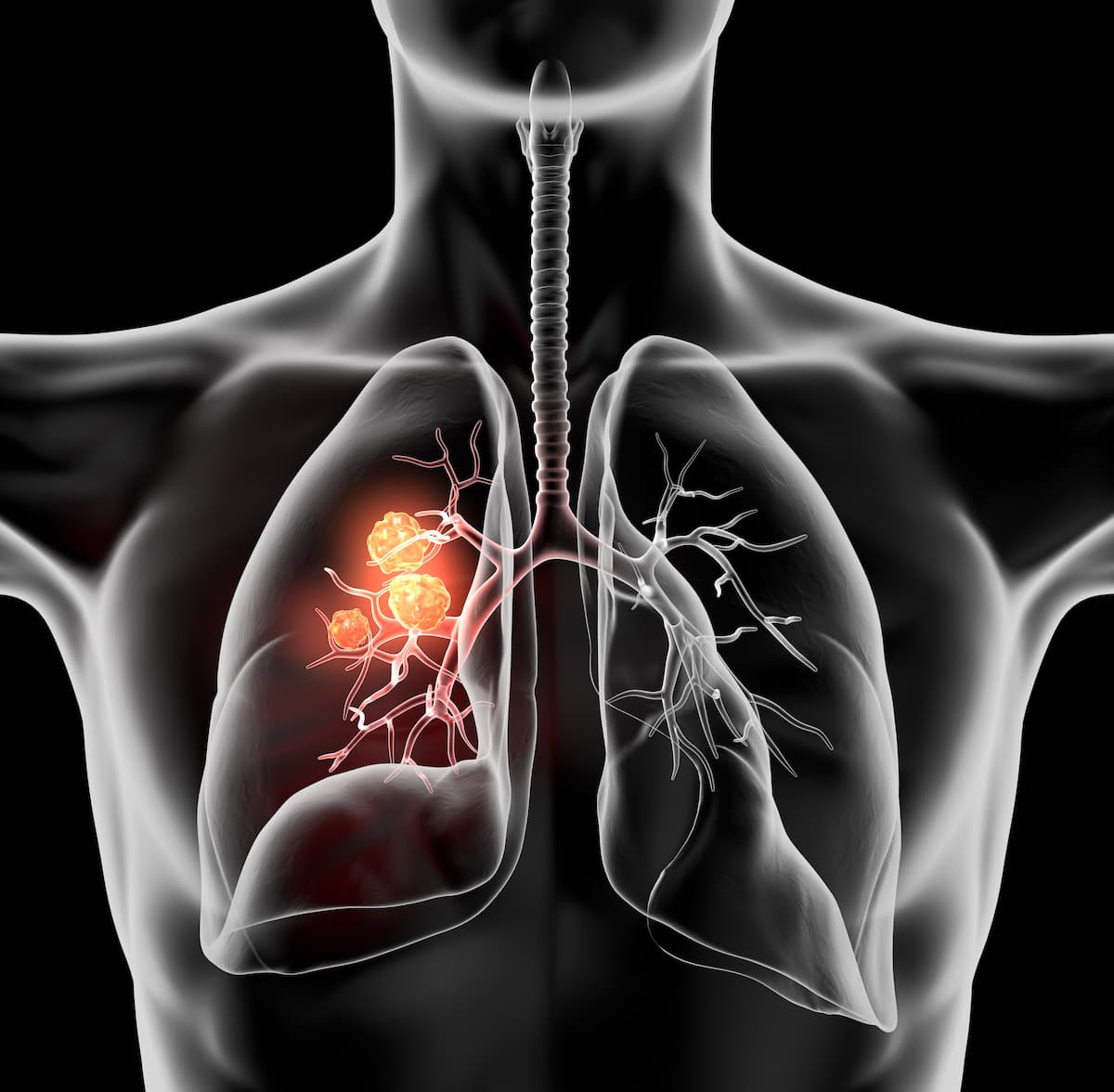Camrelizumab/Chemo Boosts Responses Vs Chemo Alone in Resectable NSCLC
Adding camrelizumab to chemotherapy appears tolerable for patients with resectable stage IIIA or IIIB non–small cell lung cancer in the phase 2 TD-FOREKNOW trial.
“The addition of camrelizumab to neoadjuvant chemotherapy resulted in a statistically significant improvement in the pCR rate for patients with resectable stage IIIA or IIIB (T3N2) NSCLC, although the actual pCR rate observed was lower than the statistical assumption in both groups," according to the authors of the phase 2 TD-FOREKNOW study (NCT04338620).

Combining camrelizumab and chemotherapy resulted in more robust pathological complete response (pCR) rates compared with chemotherapy alone in those with resectable stage IIIA or IIIB non–small cell lung cancer (NSCLC), according to findings from the phase 2 TD-FOREKNOW trial (NCT04338620).
In a population of 88 patients, the pCR rate was 32.6% (95% CI, 19.1%-48.5%) in the camrelizumab/chemotherapy arm compared with 8.9% (95% CI, 2.5%-21.2%) in the chemotherapy alone arm (OR, 4.95; 95% CI, 1.35-22.37; P = .008). Additionally, the major pathologic response (MPR) rate in each respective arm was 65.1% (95% CI, 49.1%-79.0%) vs 15.6% (95% CI, 6.5%-29.5%).
Investigators also reported a radiographic overall response rate (ORR) of 72.1% (95% CI, 56.3%-84.7%) in the camrelizumab regimen cohort vs 53.3% (95% CI, 37.9%-68.3%) in the chemotherapy cohort.
“To our knowledge, this is the first randomized clinical trial comparing camrelizumab plus chemotherapy with chemotherapy alone in the neoadjuvant treatment setting for resectable stage IIIA or IIIB NSCLC,” the authors wrote. “The addition of camrelizumab to neoadjuvant chemotherapy resulted in a statistically significant improvement in the pCR rate for patients with resectable stage IIIA or IIIB (T3N2) NSCLC, although the actual pCR rate observed was lower than the statistical assumption in both groups.”
The randomized, open-label, multicenter study was conducted at 2 sites in China. To be included in the study, patients needed to be between the ages of 18 to 70 years in addition to having histologically or cytologically confirmed resectable stage IIIA or IIIB NSCLC. Additionally, patients needed to have an ECOG performance status of 0 or 1, at least 1 measurable lesion per RECIST v1.1 criteria, undergo no previous treatment with an anticancer therapy, and have adequate organ function.
Those with presence of central nervous system metastases, immunodeficiency disease, prior treatment with immunosuppressants within 14 days of beginning study treatment, uncontrolled hypertension, or a history of or active pulmonary fibrosis or interstitial lung disease were ineligible for enrollment.
Those who were eligible went on to be randomly assigned 1:1 to receive either neoadjuvant camrelizumab at a dose of 200 mg intravenously on day 1 of every 3-week cycle for 3 cycles prior to surgical resection followed by neoadjuvant nab-paclitaxel intravenously at a dose of 130 mg/m2 on days 1 and 8 and a platinum-based agent or chemotherapy by itself. Platinum therapies included 75 mg/m2 of cisplatin, carboplatin at area under the curve 5, or nedaplatin at 100 mg/m2 intravenously on day 1.
The study’s primary end point was pCR, with secondary outcomes including MPR, ORR, event-free survival (EFS), and safety.
A total of 94 patients were eligible for enrollment, 47 of whom were assigned to the experimental arm and 47 to the control arm. Four patients in the experimental group and 2 in the control group were not able to undergo neoadjuvant treatment and were thus excluded from the modified intent-to-treat group. The median patient age was 61 years (range, 54-65), and most were male (84.1%).
In the population that successfully completed neoadjuvant treatment, approximately 93% of patients in each respective arm received surgery. The median interval from last administration of neoadjuvant therapy to surgery was 4.7 weeks (Interquartile range [IQR], 4.0-5.6) and 4.6 weeks (IQR, 4.0-4.9) in the camrelizumab and chemotherapy arms, respectively. A delay in surgery was reported in 12.5% vs 2.4% of patients in each respective arm.
The median duration of follow-up was 14.1 months (IQR, 9.2-20.9) as of the time of data cutoff. Recurrence or death was reported in 16.3% vs 26.7% in the camrelizumab and chemotherapy arms, respectively. Neither the median EFS (HR, 0.52; 95% CI, 0.21-1.29) or disease-free survival (DFS; HR, 0.54; 95% CI, 0.19-1.54) were reached in either arm. Moreover, the 12-month EFS rate was 93.0% (95% CI, 79.7%-97.7%) with the camrelizumab regimen compared with 76.9% (95% CI, 61.3%-86.9%) in the chemotherapy cohort; the rates at 24 months were 76.9% (95% CI, 56.3%-88.7%) vs 67.6% (95% CI, 48.0%-81.2%), respectively.
Additionally, the 12-month and 24-month DFS rate in the experimental vs control cohorts, respectively, were 93.2% (95% CI, 74.9%-98.3%) vs 81.4% (95% CI, 64.4%-90.8%) and 78.4% (95% CI, 54.8%-90.7%) vs 71.7% (95% CI, 50.9%-84.9%).
Treatment-related adverse effects (TRAEs) were observed in 95.3% vs 88.9% of patients in the camrelizumab and chemotherapy arms, respectively, with grade 3 or higher TRAEs occurring in 25.6% vs 11.1%. Immune-mediated AEs occurred in 53.5% of patients in the experimental arm, all of which were low-grade; the most common immune-mediated toxicities were reactive cutaneous capillary endothelial proliferation (44.2%), hypothyroidism (7.0%), and hyperthyroidism (2.3%).
Reference
Lei J, Zhao J, Gong L. Neoadjuvant camrelizumab plus platinum-based chemotherapy vs chemotherapy alone for Chinese patients with resectable stage IIIA or IIIB (T3N2) non–small cell lung cancer: the TD-FOREKNOW randomized clinical trial. JAMA Oncol. 2023;9(10):1348-1355. doi:10.1001/jamaoncol.2023.2751